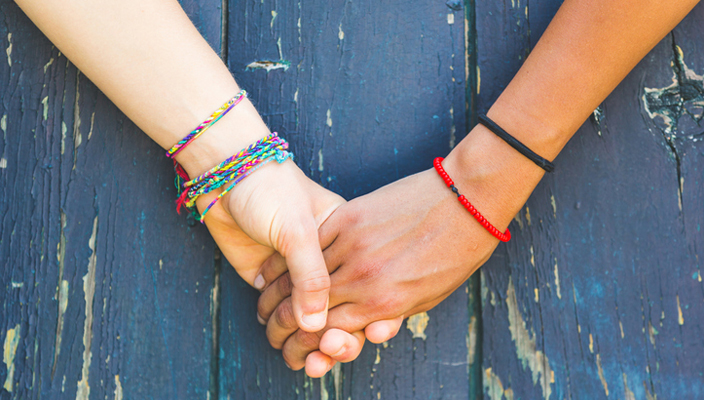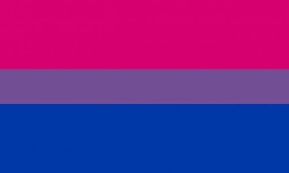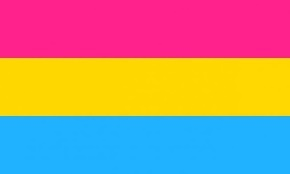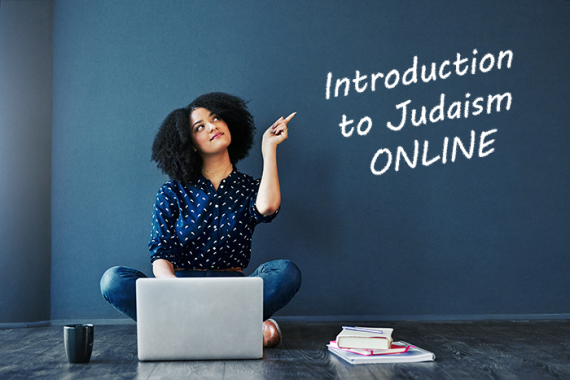
"As a bisexual Jew, I am often told to ‘choose a side,’ which is something that I believed for a long time that I had to do with both my bi and Jewish identities. However, since deciding to embrace both of my identities and eschew the gay/straight binary, I have felt even more whole with them. "
- Rachel Bell, 2019 intern, Union for Reform Judaism
Recent years have seen much progress in accepting gays and lesbians, but bisexual (bi) and pansexual (pan) people still often feel marginalized by both the straight and gay/lesbian communities – and even by the Jewish community. This is despite existing in high numbers: In fact, statistics shared by the Pew Research Center found that in a 2013 survey of LGBTQ+ Americans, 40 percent of respondents said they were bisexual – a far higher percentage than those who identified as gay, lesbian, or transgender.
Since 1965, the Union for Reform Judaism (URJ) has passed multiple resolutions that affirm, accept, and include the LGBTQ+ community in Jewish life and advocate more broadly for equality. The concept of Audacious Hospitality, coined by the URJ, believes in diversity, inclusion, and equity for all Jews, including those who do not exist along the gay/straight binary.
With that in mind, we define bisexuality and pansexuality – and hear from some individuals who share how their sexual identities also intersect with their Jewish identities.
Bisexuality
 A bisexual (or bi) person is attracted to people of two or more genders. While the term was originally coined to reflect the gender binary, as of 1990 the term has meant attraction to two genders or more. Despite this change in definition, though, some people don’t identify with the “bi-” prefix and prefer instead to identify as polysexual (someone attracted to multiple genders).
A bisexual (or bi) person is attracted to people of two or more genders. While the term was originally coined to reflect the gender binary, as of 1990 the term has meant attraction to two genders or more. Despite this change in definition, though, some people don’t identify with the “bi-” prefix and prefer instead to identify as polysexual (someone attracted to multiple genders).
C.E. Harrison, former writer/editor for the URJ’s Audacious Hospitality team, says:
I openly identify as bi to affirm a part of myself I pretended didn’t exist for most of my life. I identify as bi because while I respect the polysexual label, Judaism teaches me that labels, like everything else, are in a constant state of process and can evolve in meaning. I believe God, in God’s infinite queer wisdom, made me in God’s image (Genesis 1:27), and my bisexuality is part of that. In many ways, I feel that being a bi Jew is one of my own personal “superpowers.”
Rachel Bell, a 2019 URJ intern for Audacious Hospitality, also identifies this way. She says:
“I have found queer narratives within Jewish texts and ways to incorporate Jewish practice into my bi identity. I will not – I cannot – ‘choose a side,’ as a bi person or as a Jewish person.”
Pansexuality
 A pansexual (or pan) person is attracted to people of all genders. Pansexual individuals do not factor gender into one’s attraction to another person, whereas bisexual individuals may prefer certain genders and for differing reasons.
A pansexual (or pan) person is attracted to people of all genders. Pansexual individuals do not factor gender into one’s attraction to another person, whereas bisexual individuals may prefer certain genders and for differing reasons.
Similar to pansexuality is omnisexuality. While gender does not factor into pan individuals’ attraction to others, omnisexual (or omni) people notice gender as a factor but don’t care how someone identifies.
Rachel Hall, the URJ’s program manager for Audacious Hospitality, says the term “pansexual” still feels a bit foreign to her but that it is likely the correct term for her sexuality:
“Pansexual is not a term I was aware of when I was ‘coming out.’ When I was 21 years old, exploring my sexuality and eventually having a serious relationship with a woman, I distinctly remember refusing to ‘come out’ as anything but ‘in love.’ I was angry that people were so focused on my sexuality instead of my love for this woman. Why did I need to use a label when straight people didn’t?
“However, as I gained more understanding of myself and society’s role in internalized homophobia, I understood the important role language plays with respect to equity and inclusion, and I’m grateful for so many inclusive terms, including pansexuality.”
Mo Selkirk, a 2019 LGBTQIA+ JewV’Nation fellow, feels that Reform Judaism aligns perfectly with her pan identity:
“As someone who is pan, the Judaism I’ve experienced is warm, extremely accepting, and deeply rooted in social action and in remembering our own history of discrimination. The idea of light, the idea of acceptance, the idea of love and openness both reflect how I embrace my Judaism and pansexuality; they complement each other perfectly.”
Acting as an Ally
Validating and affirming bi, pan, and other identities outside of the gay/straight binary is a vital element of making our communities welcoming and accepting. So how can individuals on the gay/straight binary act as allies?
Doing so involves, in part, calling out negative remarks or assumptions – for example, the idea that bisexual/pansexual people are “confused” about their sexualities or should “pick a side.” A good ally pushes back on accusations that bi/pan people are inherently unfaithful, “seeking attention,” or going through a “phase.”
Being an ally also means:
- Using the LGBTQ+ label instead of just “gay and lesbian”
- Practicing active listening when it comes to people’s needs
- Recognizing and uplifting bi and pan people’s many contributions to society.
C.E. Harrison sums it up nicely – and quite Jewishly: “When you acknowledge and respect our identities, you also acknowledge and respect the unique Divine light that shines within us – a light that exists in many forms and encompasses many lived experiences.”
To learn how to better respect your community’s bi and pan community, visit the Bisexual Resource Center for information about the experiences of bi and pan individuals, helpful educational resources, and tips for how to be a good ally.

